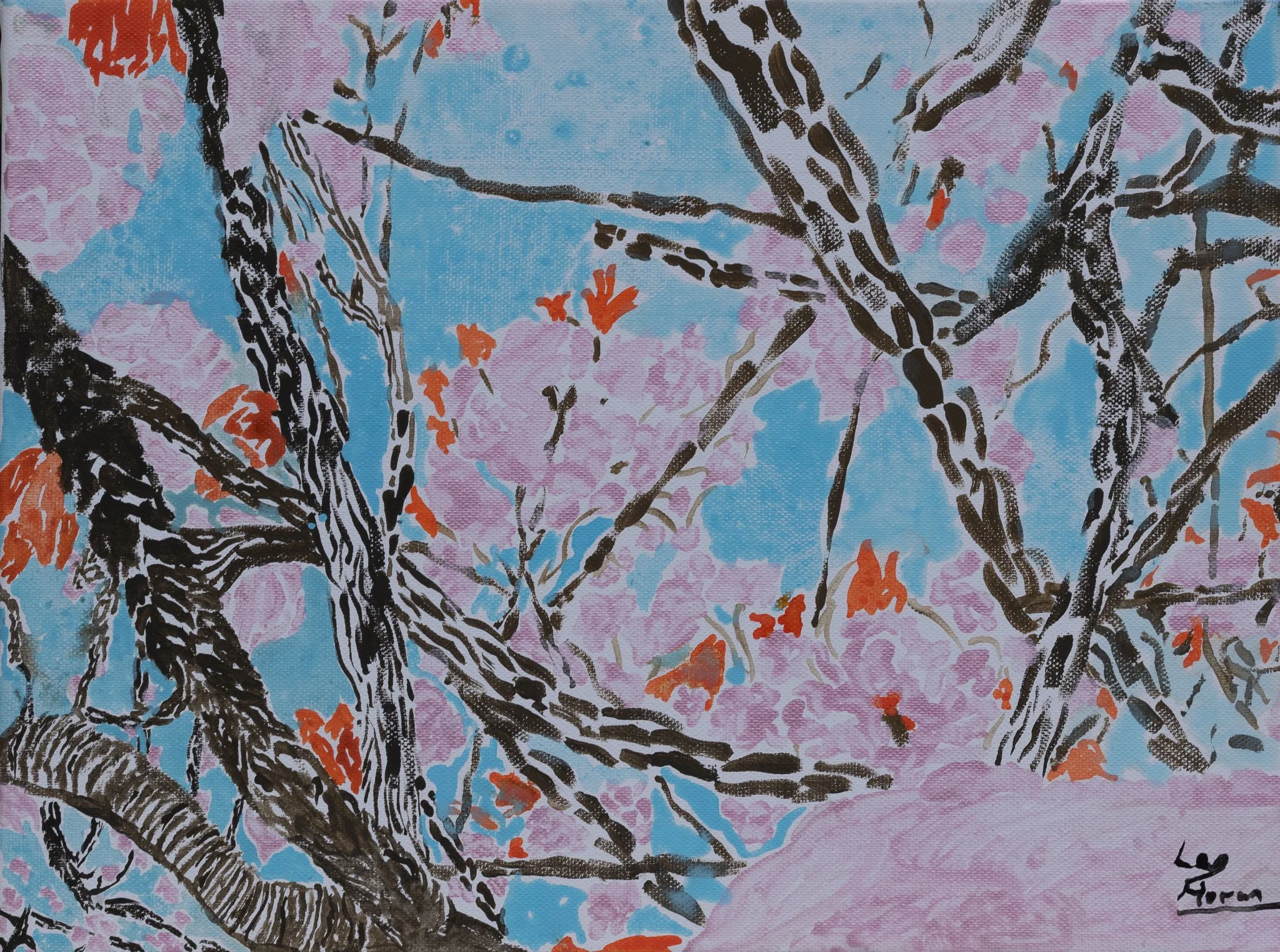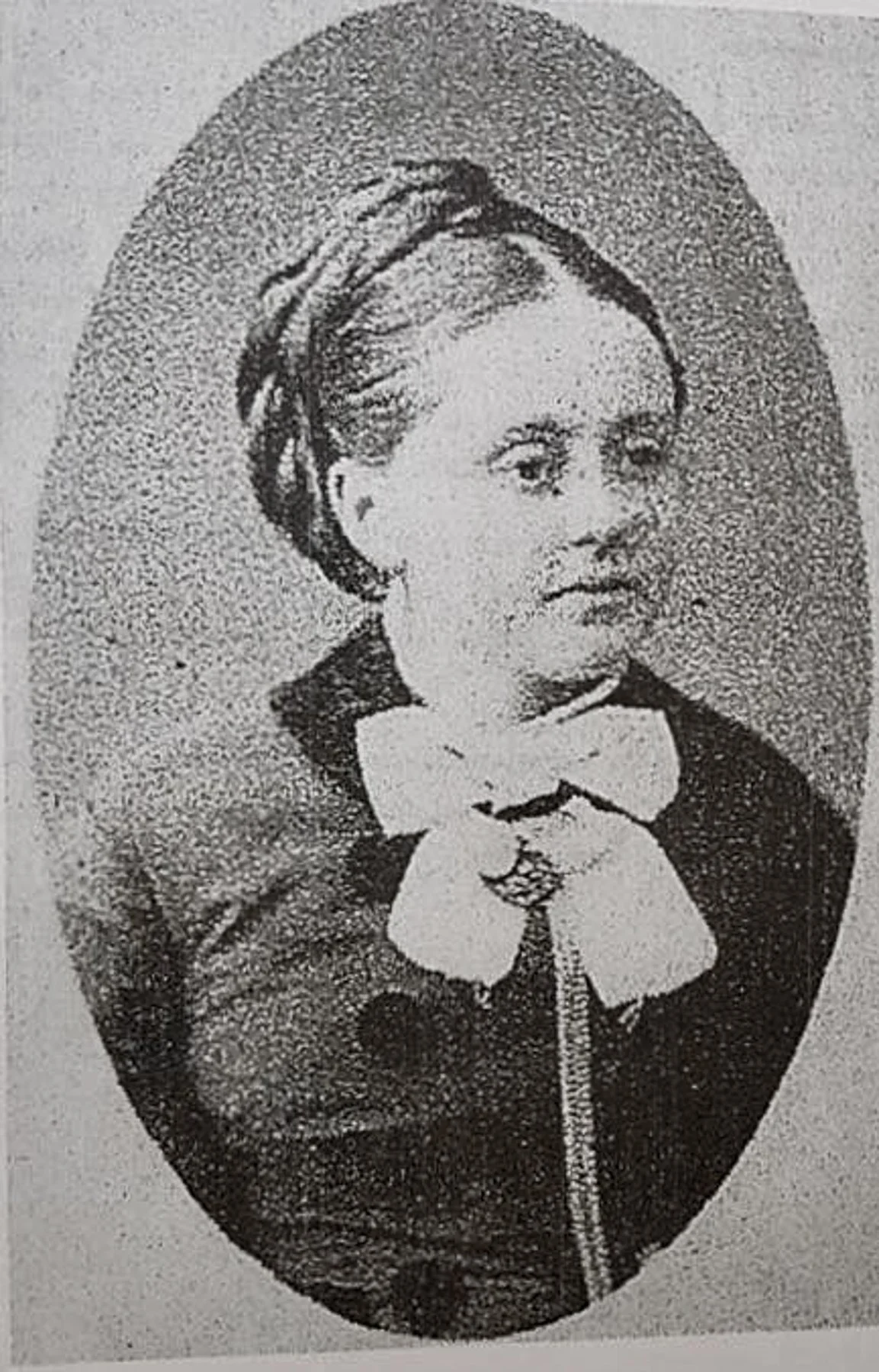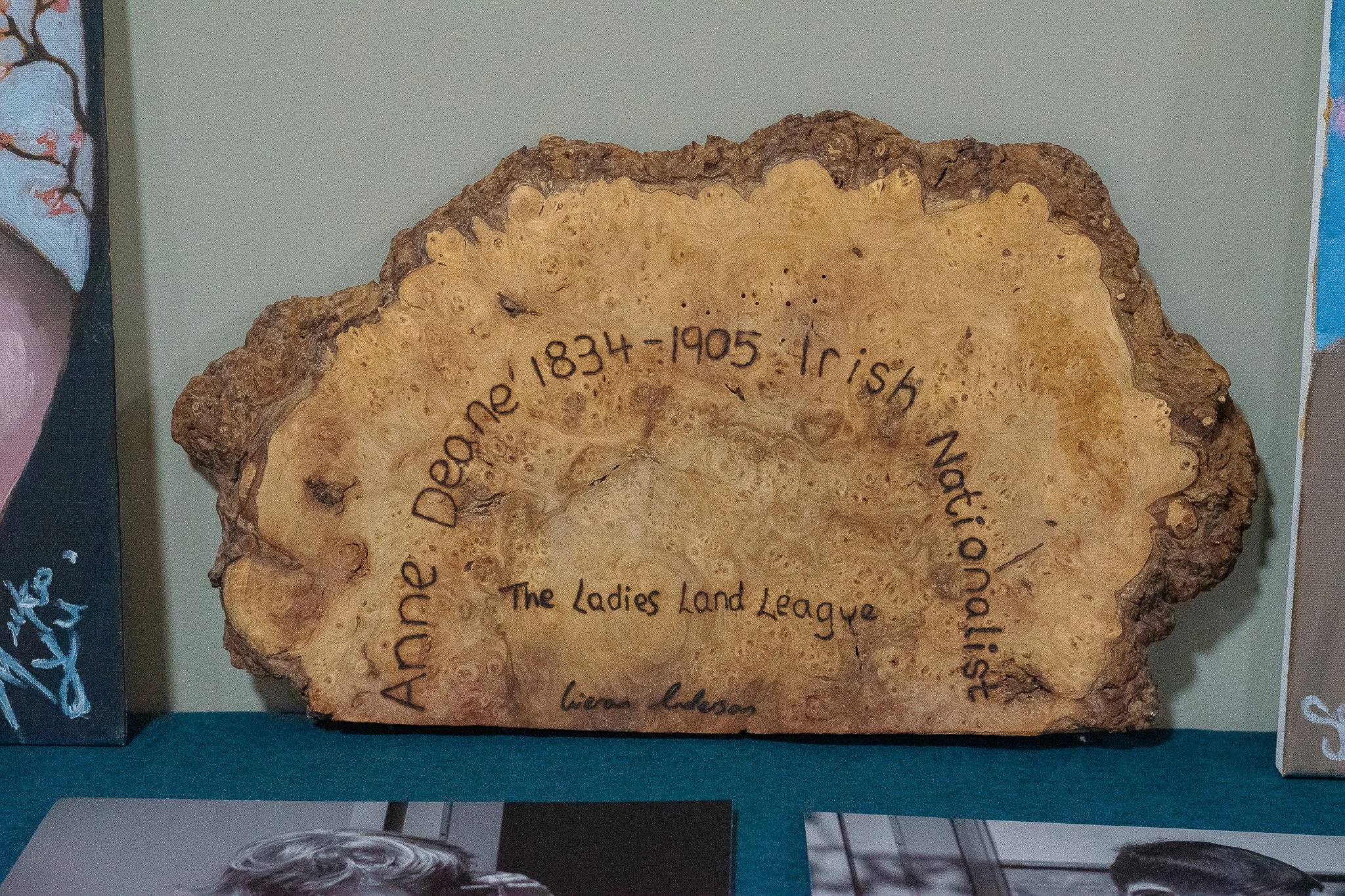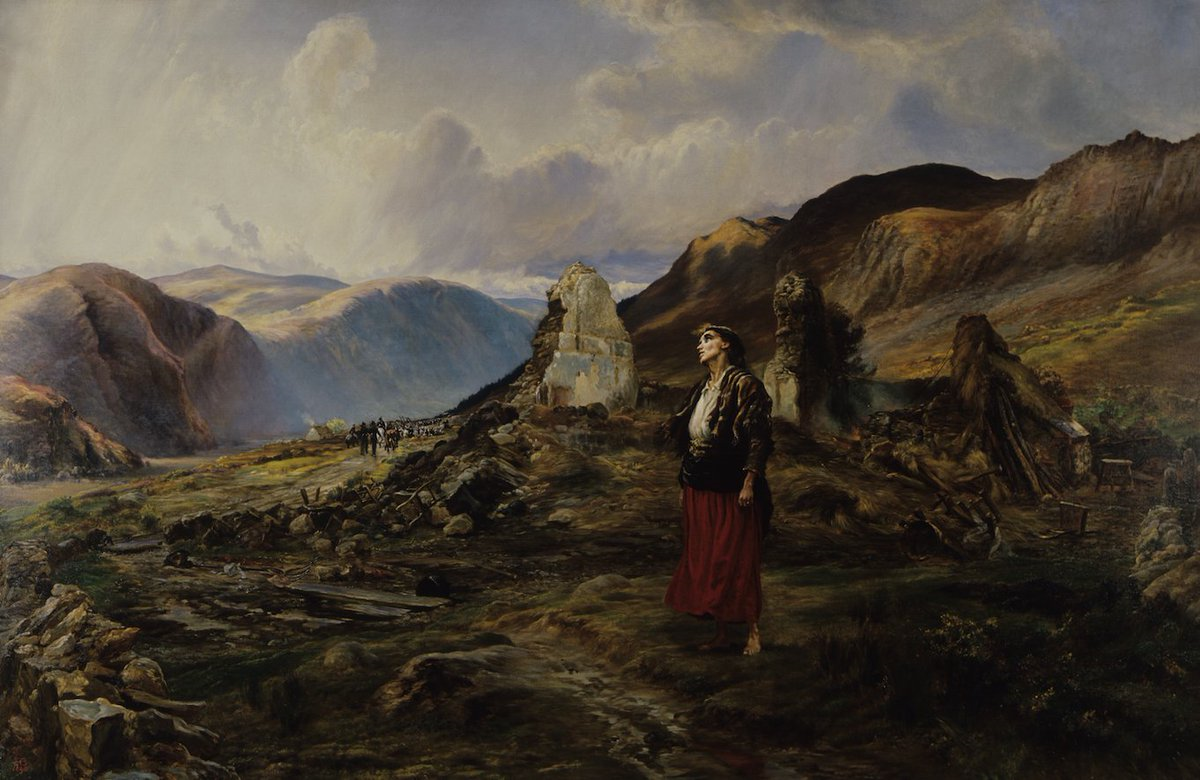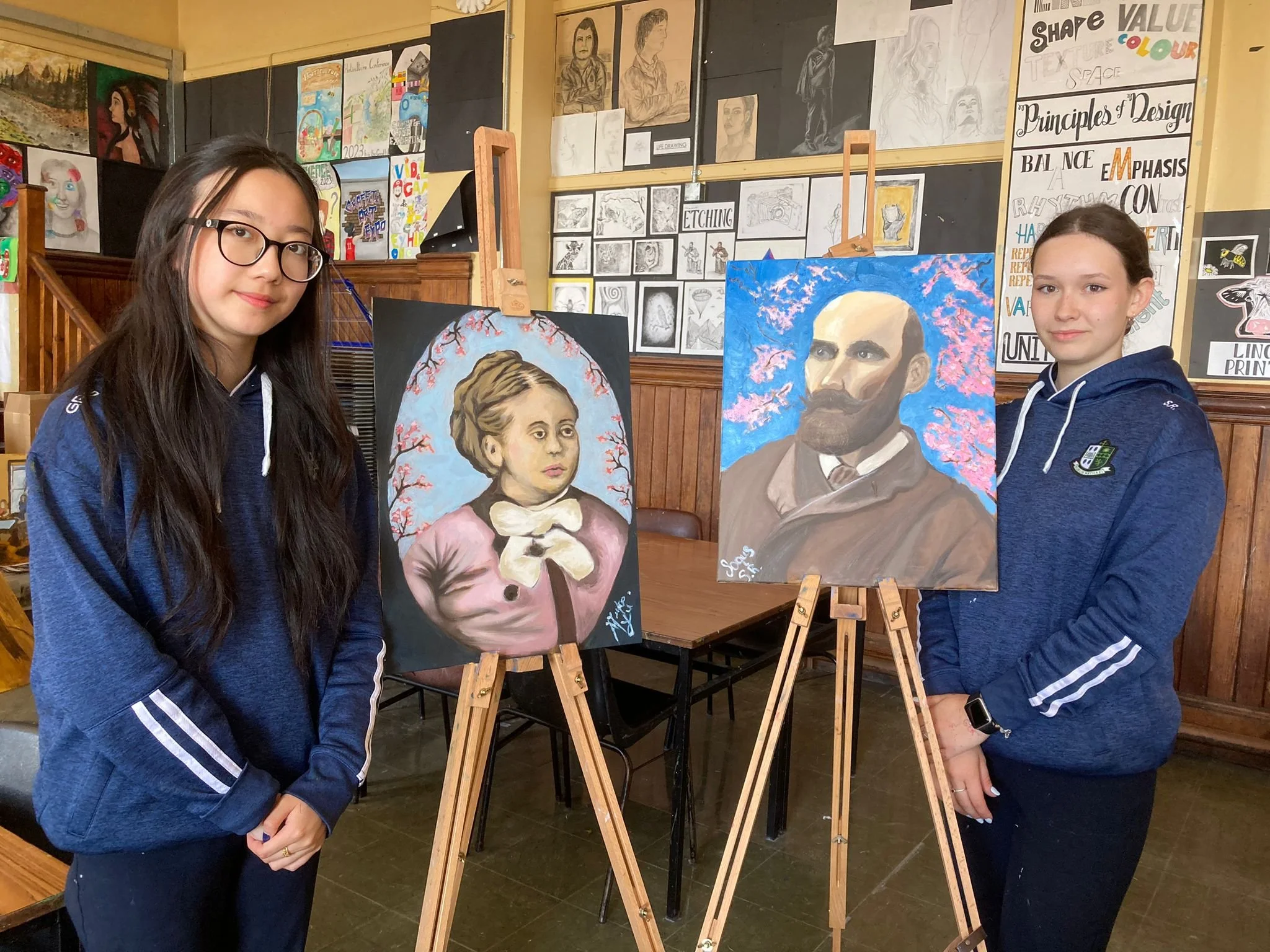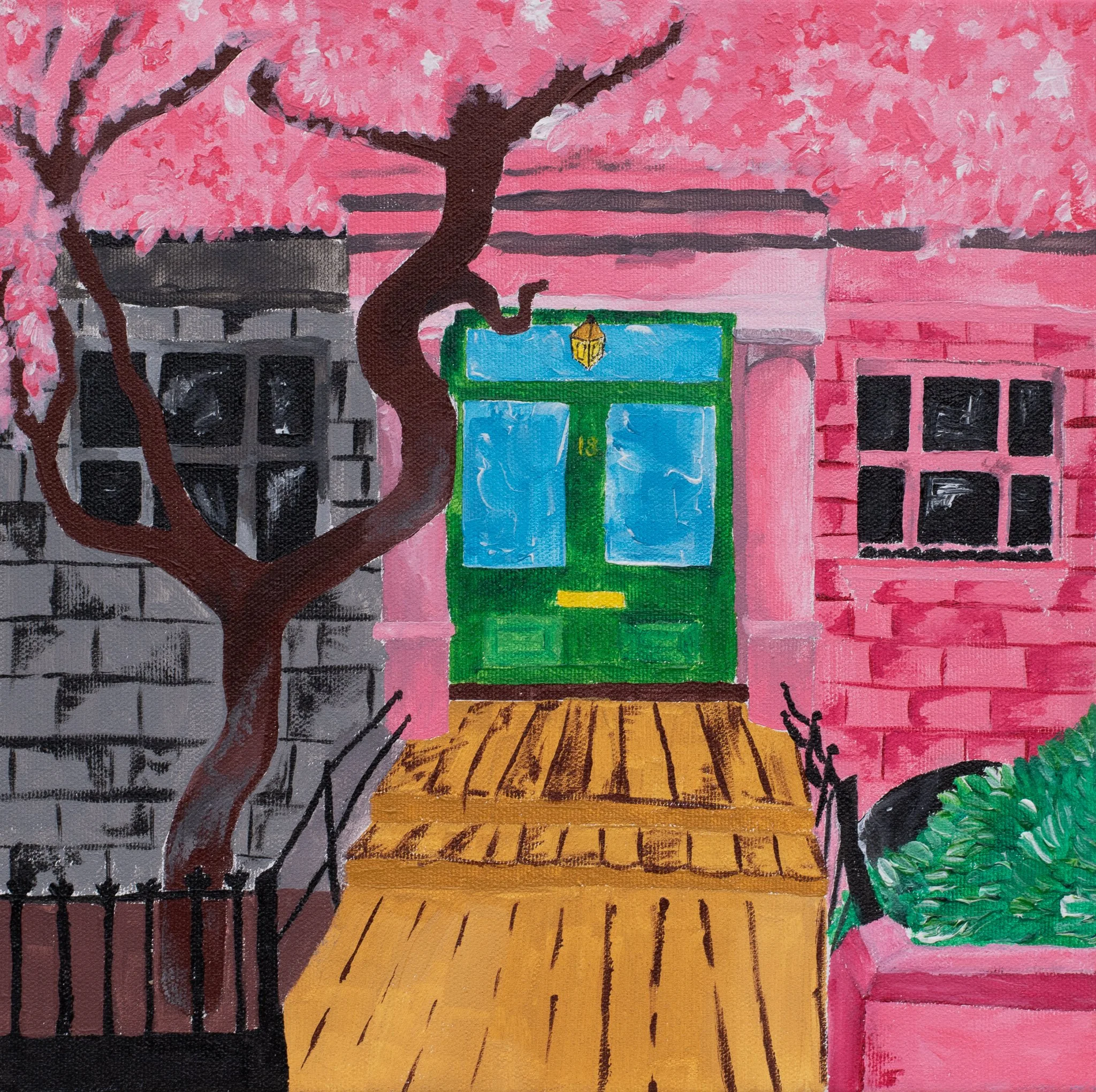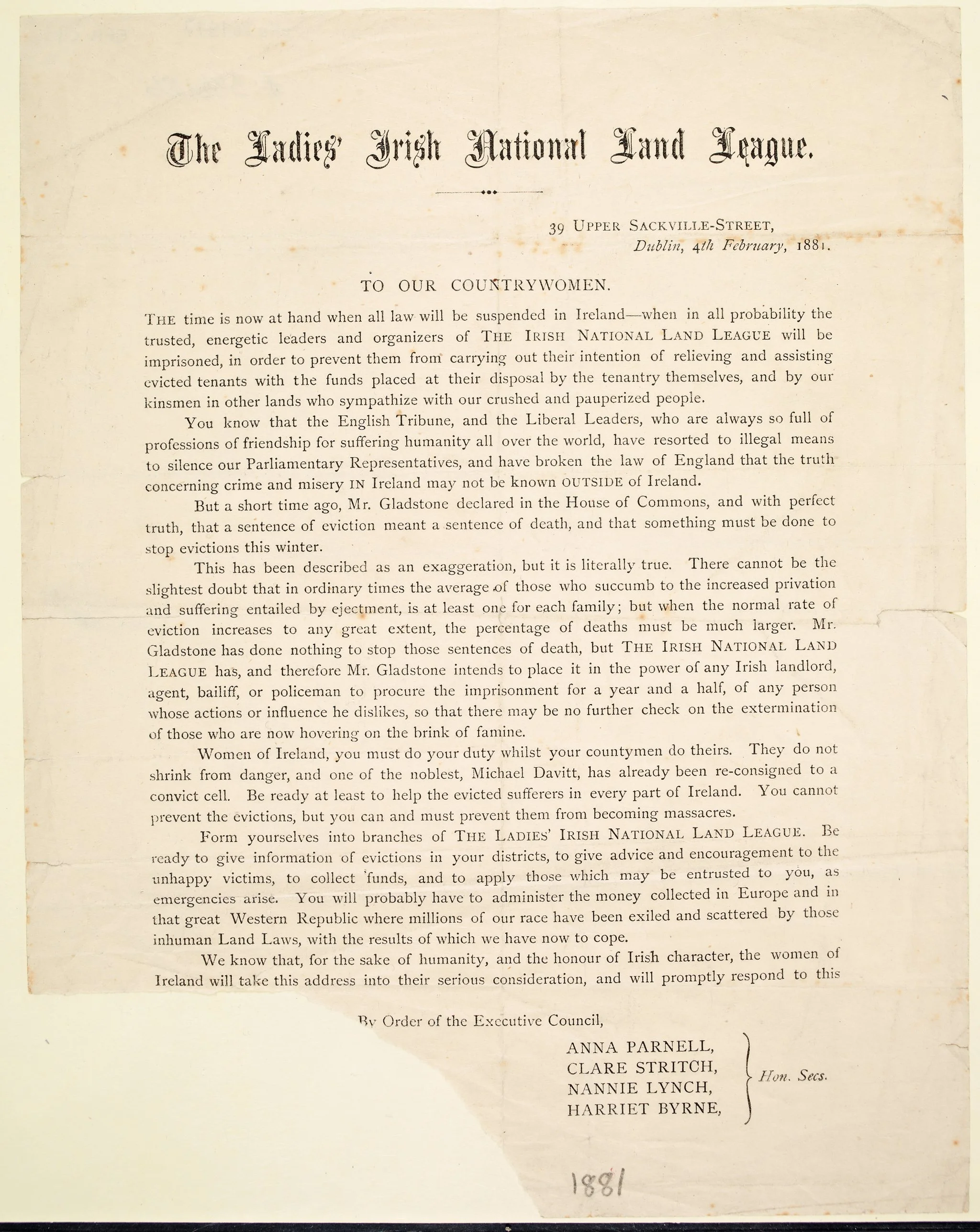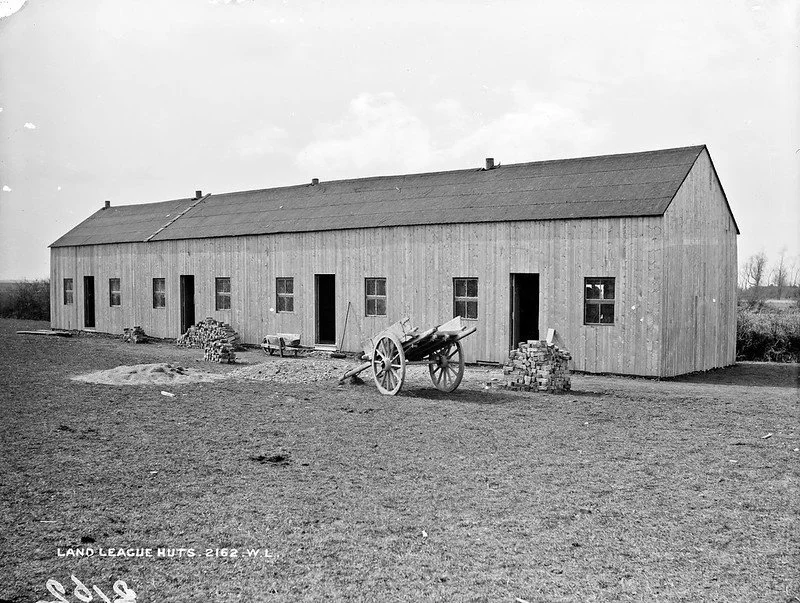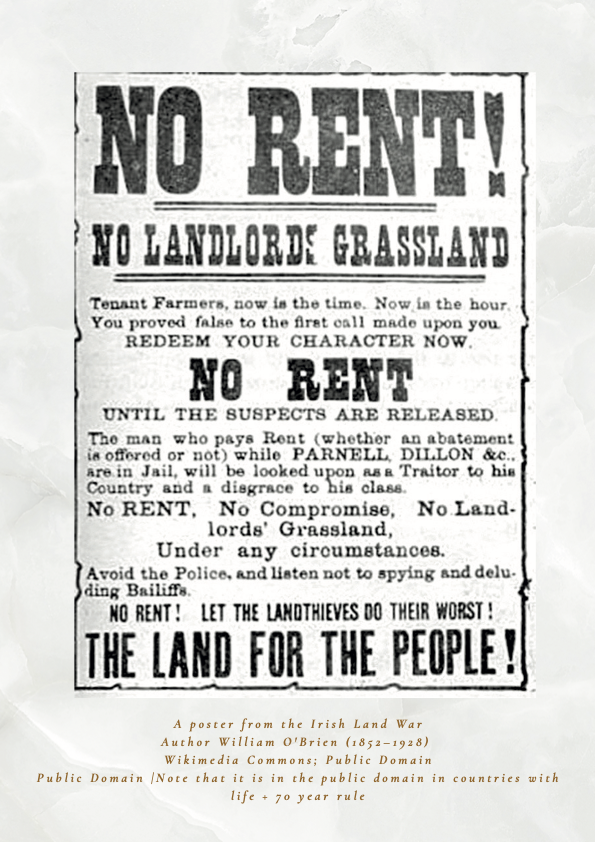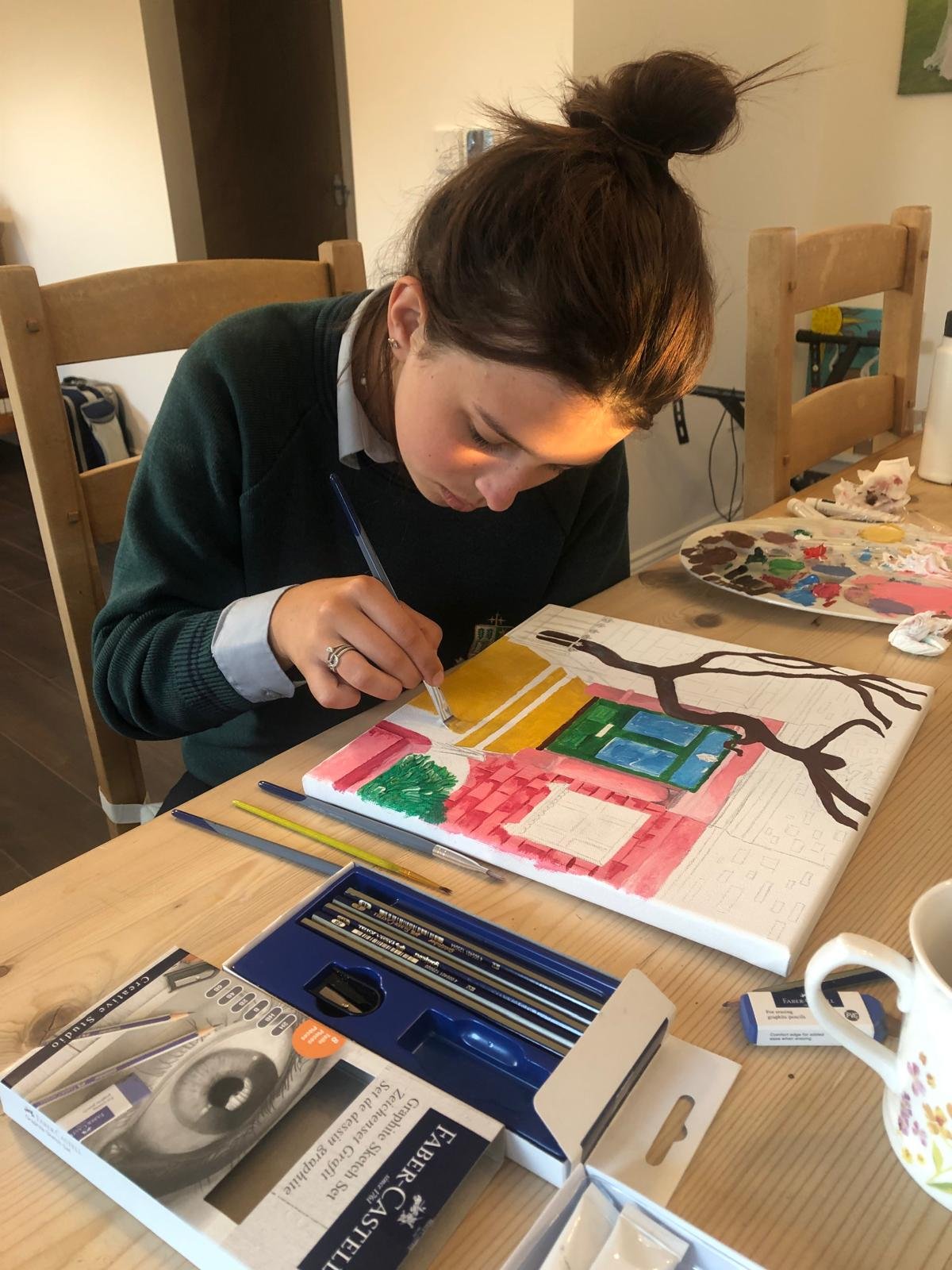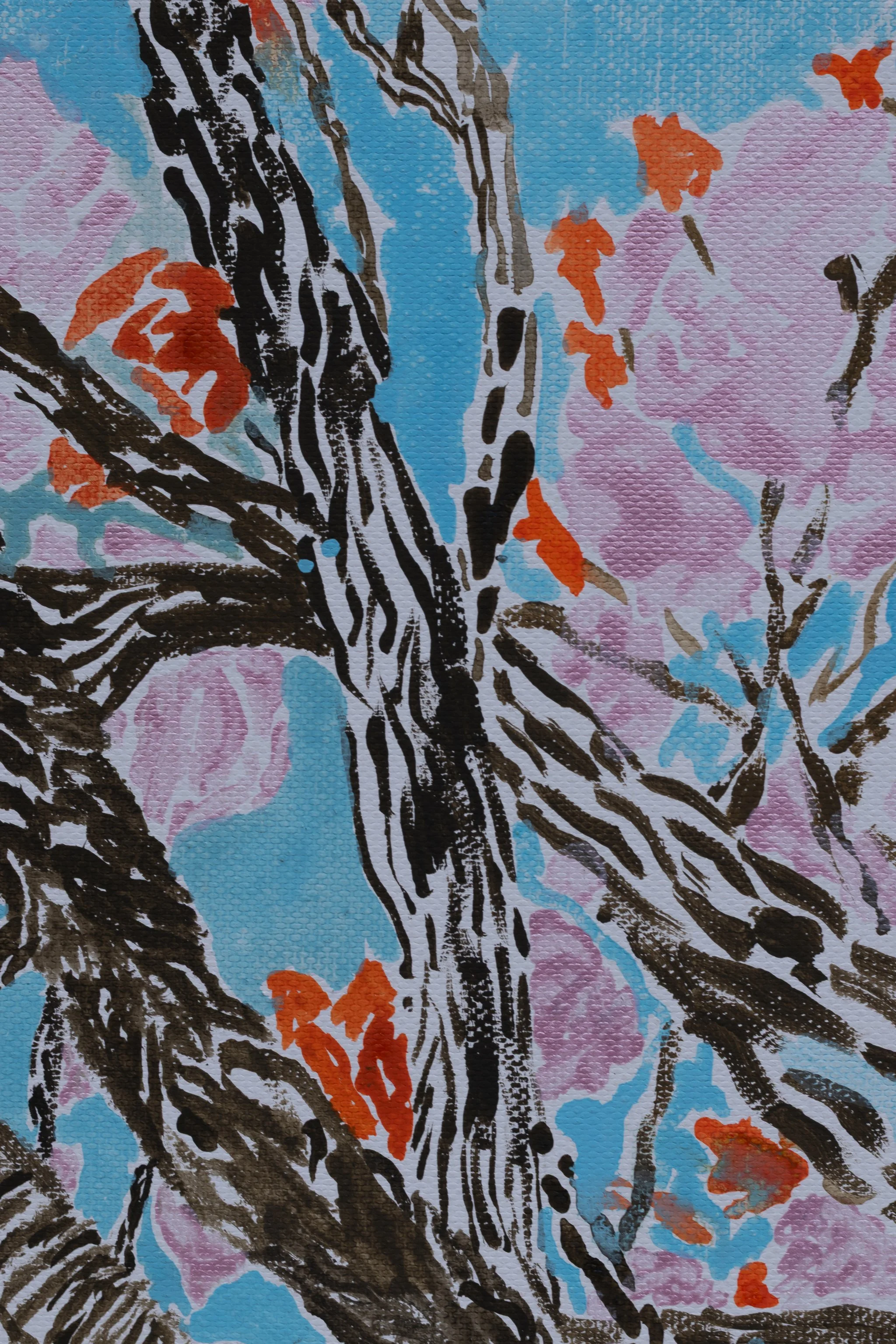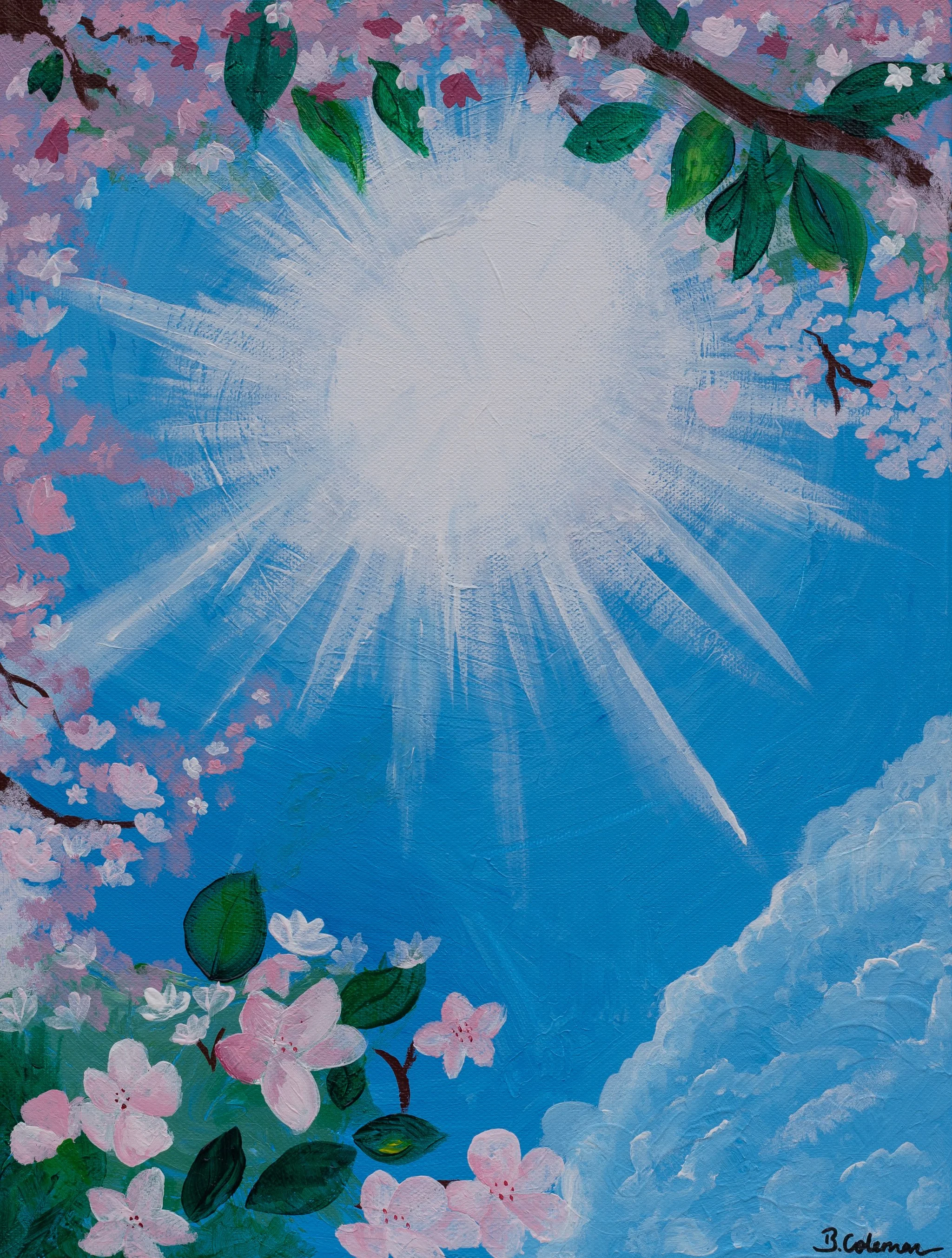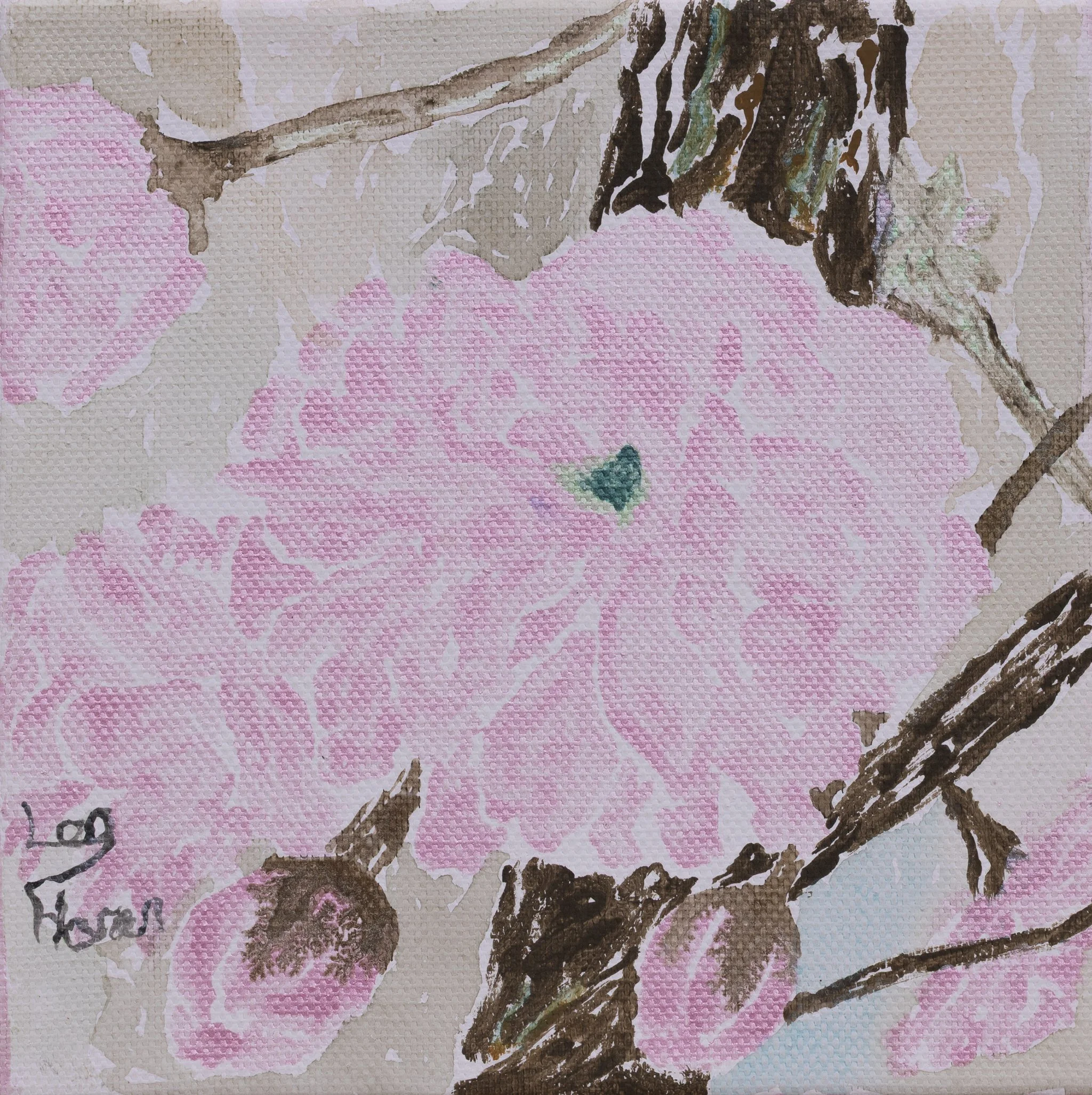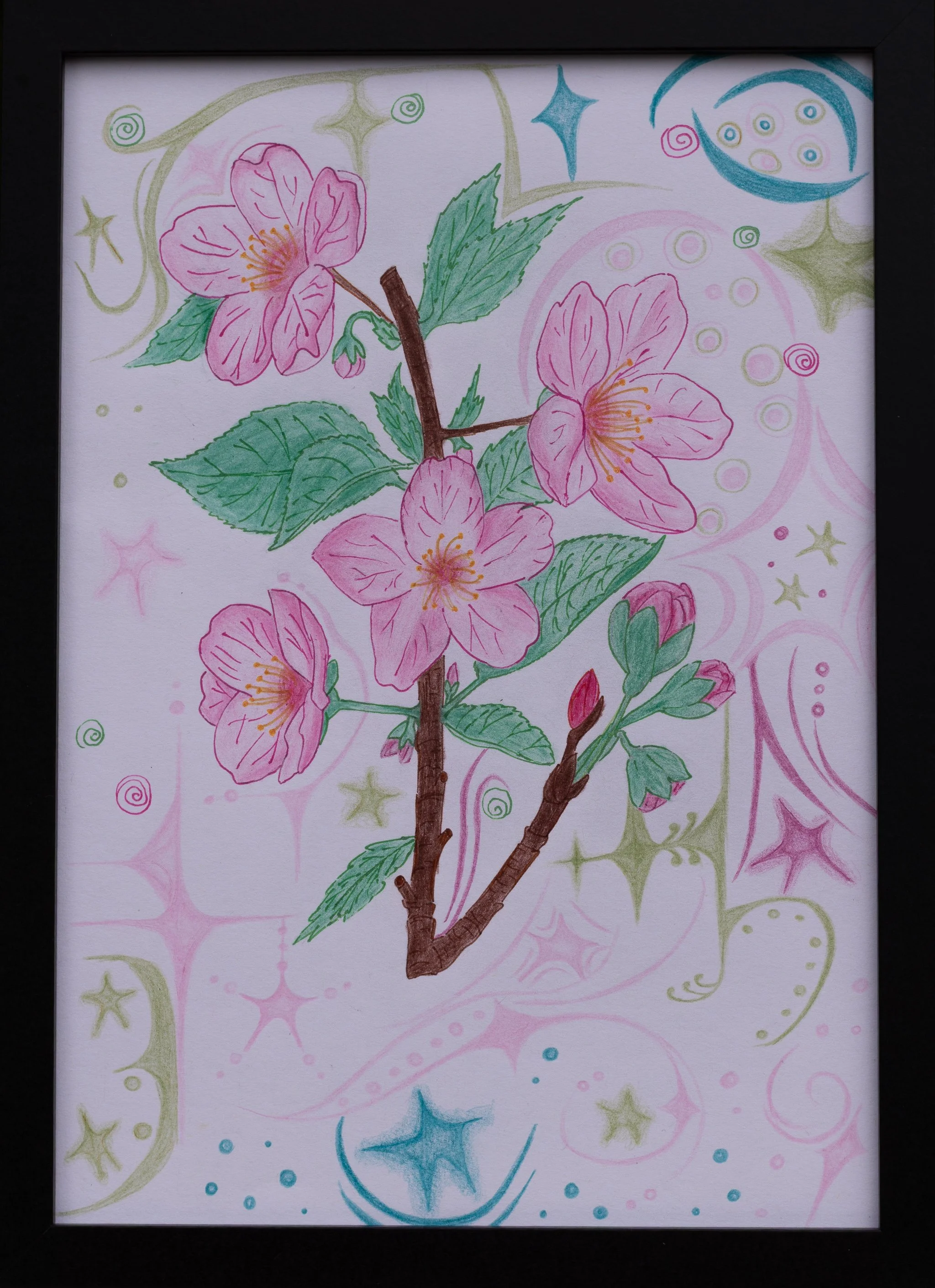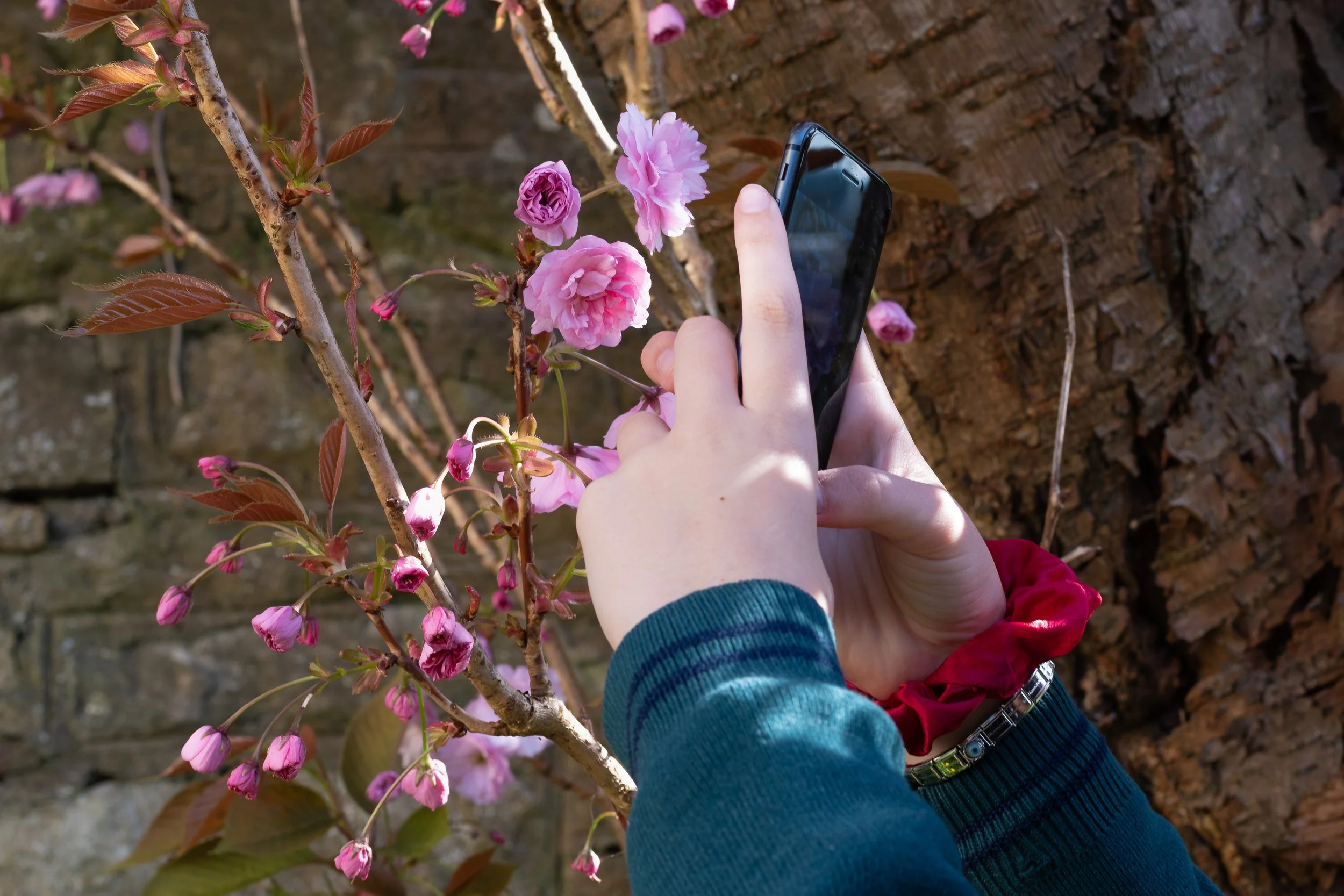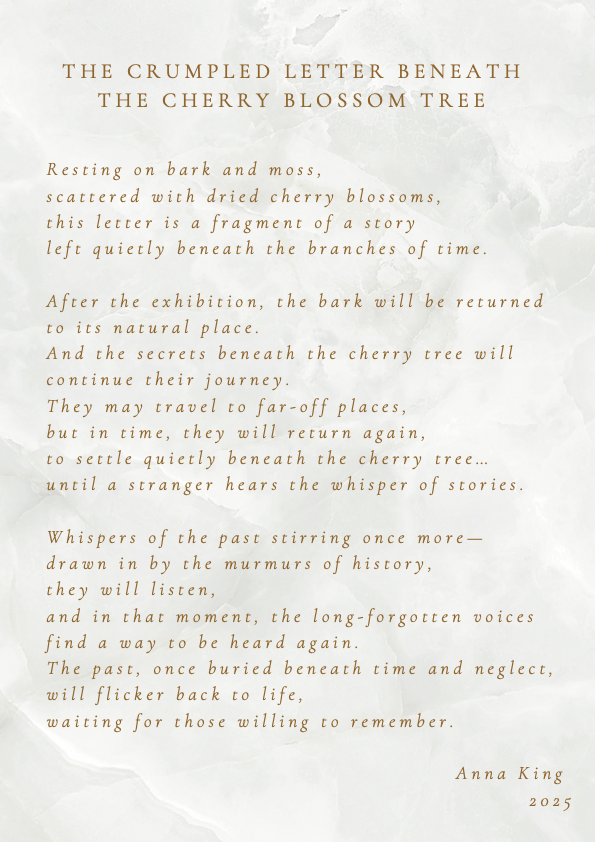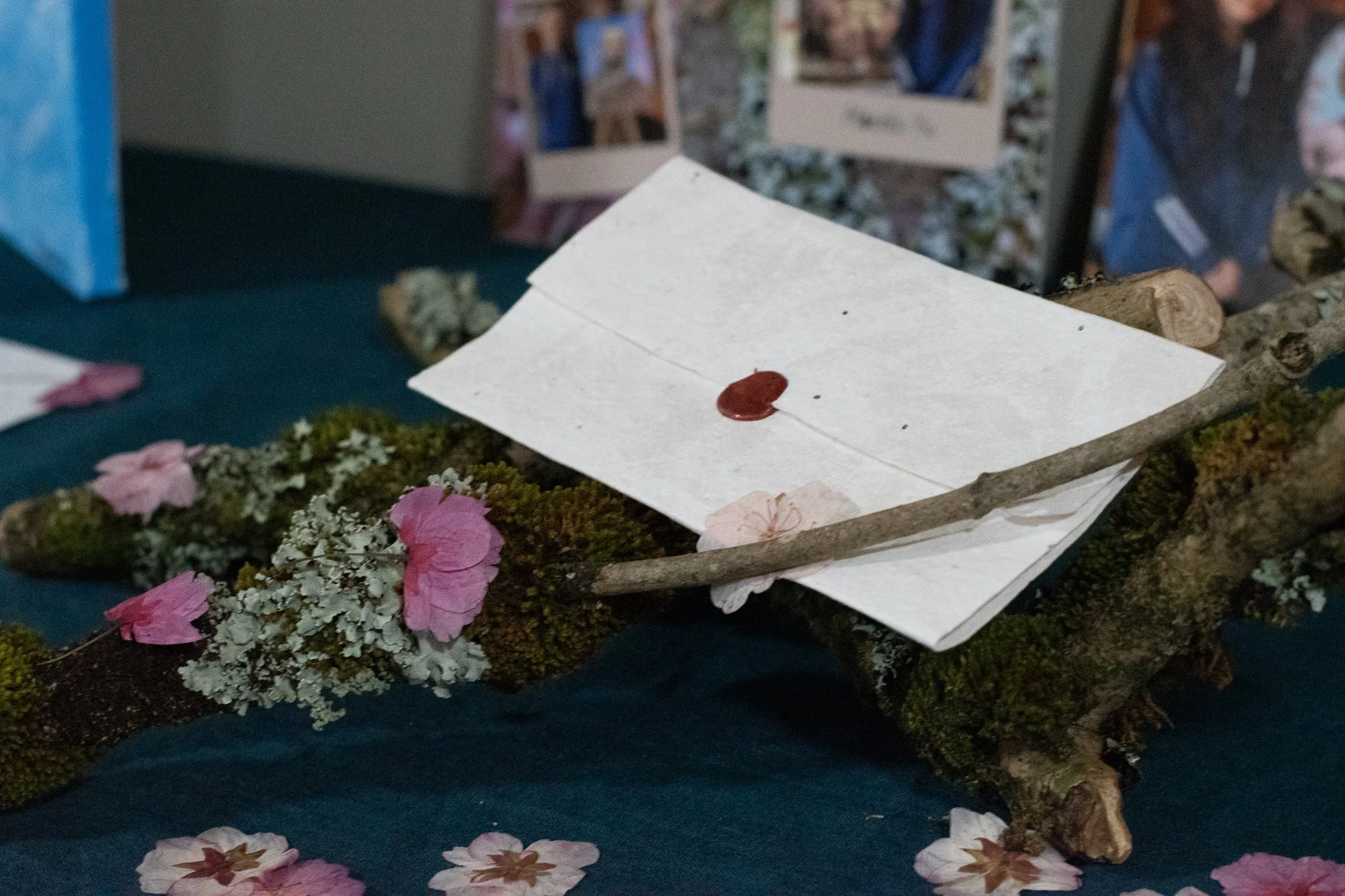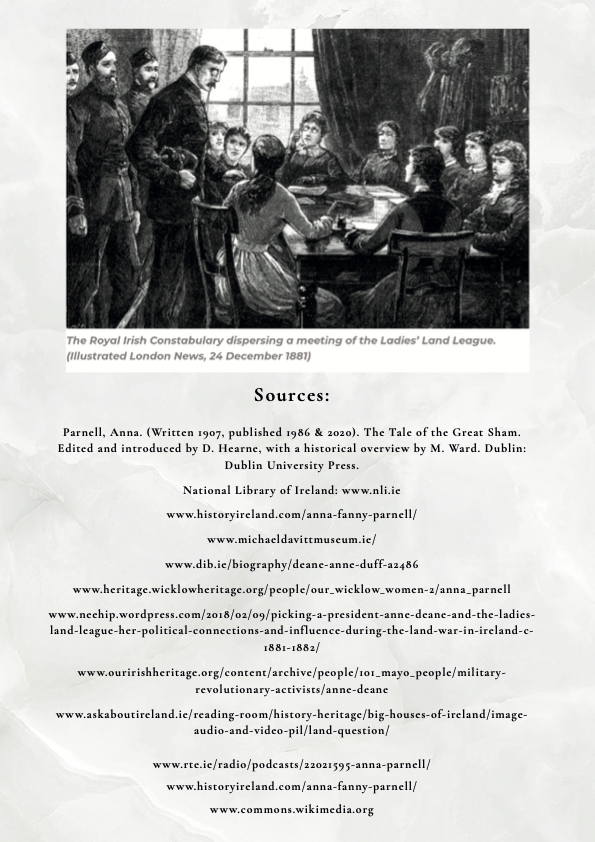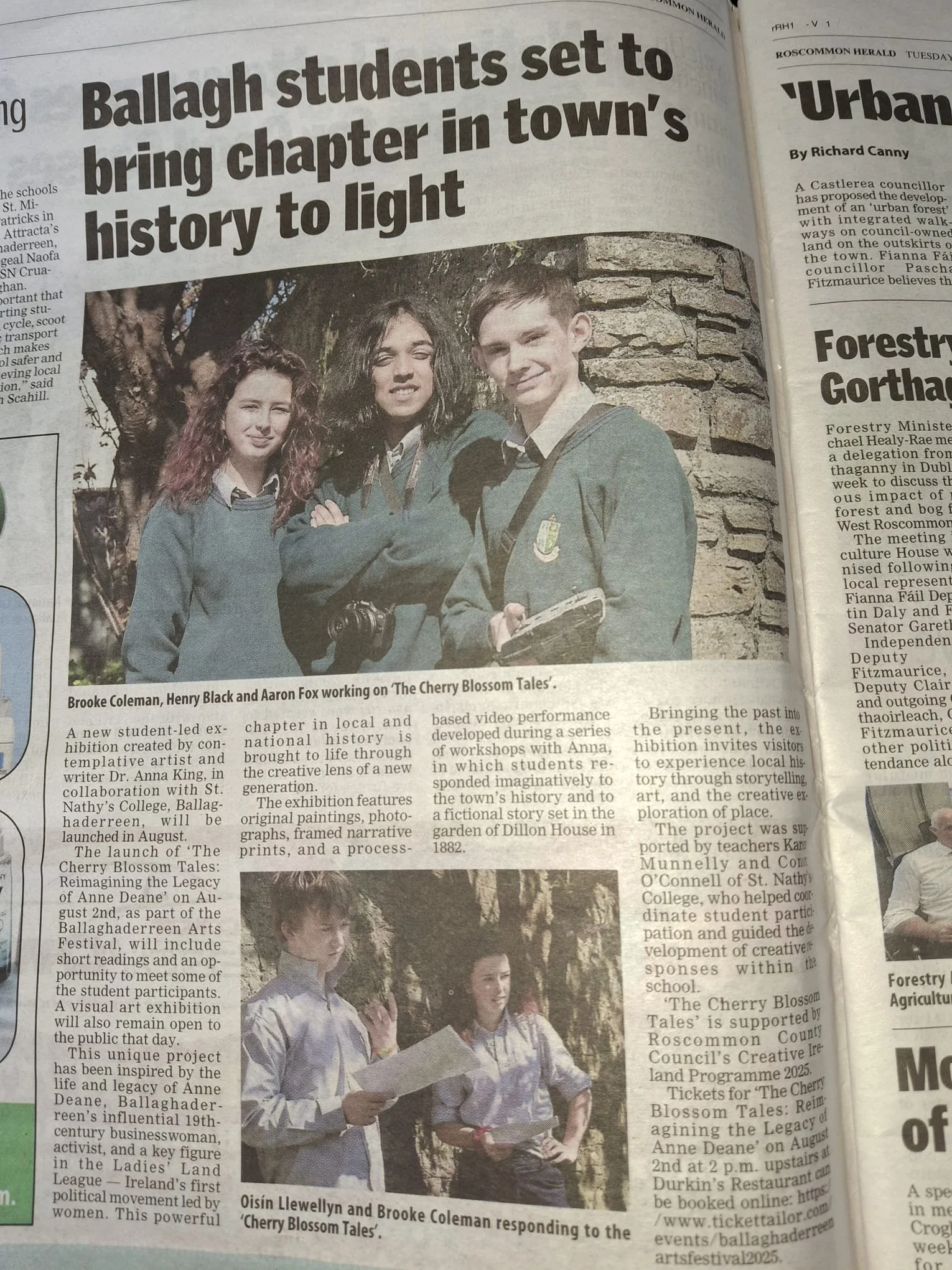Online exhibition
The Cherry Blossom Tales
Painting, by Leo Horan.
On 2 August 2025, a packed house gathered at the Ballaghaderreen Arts Festival to experience ‘The Cherry Blossom Tales’, a youth-led exhibition that brought the past to life in a contemporary context.
Led by Dr. Anna King in collaboration with Karen Munnelly’s students at St. Nathy’s College, this project celebrates and reimagines the life of Anne Deane (1834–1905).
Anna Deane. See paintings below.
Breaking the Silence: Anne Deane’s Gentle Defiance in 19th-Century Ireland
In 19th-century Ireland, women were largely excluded from political and public life. Social norms dictated that they should “remember the modesty of their sex”, and positions of wealth or influence were almost always inherited by men.
Against this backdrop, Anne Deane of Ballaghaderreen stood out as a remarkable exception.
Woodwork, by St. Nathy’s Kieran Henderson
Anne Deane was a pioneering Ballaghaderreen-born businesswoman, owner of Monica Duff & Co., and a political activist who played a leading role in the Ladies’ Land League.
Despite her leadership, Anne Deane’s role has largely been overlooked in mainstream historical narratives.
This project seeks to shine a light on her legacy and the wider impact of the women who stepped forward during one of Ireland’s most turbulent political struggles.
Evicted. Artist: Elizabeth Thompson Butler (1846–1932)
Source: Courtesy of Wikimedia Commons; Public Domain | Note that it is in the public domain in countries with life + 70 year rule.
Background
The idea for ‘The Cherry Blossom Tales’ was sparked in 2024, when local resident Margaret Garvey shared how she had saved the last remaining cherry tree in the garden of Dillon House, Ballaghaderreen. That simple act of care, grounded in Margaret’s deep love for Ballaghaderreen’s hidden histories, planted the seed for a project that has since grown into a vibrant tribute to place-based storytelling and youth creativity.
Dillon family home, Ballaghaderreen (circa 1930), Cashman Collection: A Hub of Political during Anne Deane’s life.
Margaret Garvey & Anna King. Photo by Eithne Gallagher.
While the Dillon House garden no longer remains, the tree still stands in Ballaghaderreen as a quiet landmark – a living witness to the past and a symbol at the heart of this project.
Margaret opened ‘The Cherry Blossom Tales Exhibition’, with her own moving and spirited recollections of the town’s past.
The content for this exhibition was created during a series of workshops in which students responded to Ballaghaderreen’s history through ‘The Cherry Blossom Tales’, a short story set in the garden of Dillon House in 1882, written by contemplative artist and writer Anna King.
Honouring the Legacy of Anne Deane & The Ladies Land League
Anne Deane, oil painting, by Meeko Yu. Michael Davitt oil painting, by Sonya Radchenko.
Anne was born in Ballaghaderreen, County Mayo (now part of County Roscommon) in 1834. As a young woman, she inherited Monica Duff’s store from her mother and, through determination and skill, expanded it into one of the largest enterprises in the country. Widowed at a young age, Anne became an independent, well-educated woman, deeply committed to the nationalist cause.
Reimagining Dillon House, by Brooke Coleman
The political world Anne inhabited was deeply interconnected. Dillon House, her family home, belonged to her uncle John Blake Dillon, founder of the Young Ireland movement. His son, John Dillon, went on to lead the Irish Parliamentary Party, and his grandson, James Dillon, became leader of Fine Gael in the mid-20th century.
Visitors to Dillon House during Anne’s lifetime included Michael Davitt and Charles Stewart Parnell (footnote 1).
Source: Ballaghaderreen Past & Present Facebook Page.
The Land War
The Ladies’ Land League emerged in January 1881 during a period of intense conflict and hardship, fuelled by exploitative landowning practices that led to widespread poverty, mass evictions, and the threat of starvation. The movement gained momentum following the imprisonment of male Land League leaders under the Coercion Act, when women stepped in to continue the struggle.
For the first time in Irish history, women publicly organised themselves into a national political body with branches, leadership, and coordinated strategies.
Under the leadership of Anna and Fanny Parnell, and with Anne Deane as the first president of the Dublin branch, the League campaigned to secure tenant ownership through the “Three Fs”: Fair Rent, Fixity of Tenure, and Free Sale.
Original Letter, Courtesy of the National Library of Ireland.
The women faced fierce resistance and public ridicule.
They were dismissed in the press as “patriots in petticoats” and a “screaming sisterhood” (footnote 2). In February 1881, James Daly of The Connaught Telegraph wrote with considerable disdain about “female leadership in Irish constitutional warfare” (footnote 3).
Yet they persisted.
The Ladies’ Land League established over 500 branches across Ireland, raised substantial funds, built more than 200 huts for the evicted in a single year, paid legal costs for tenant farmers, and kept the Land War alive for eighteen months while the men remained in prison.
Land League Huts: Main Creator: French, Robert, 1841-1917 Photographer. Contributors: Lawrence, William, 1840-1932. In The Lawrence Photograph Collection: Courtesy of National Library of Ireland.
Among their most remarkable achievements was the creation of a Children’s Land League.
This was a groundbreaking idea in an era when many children had little or no access to formal education. At these gatherings, young people were taught Irish history, land rights, and the meaning of the struggle.
It is easy to imagine Anne Deane, known for her generosity and deep compassion, taking particular pride in this legacy and in the seeds of awareness it may have planted for the future.
“The Book of Kells”
Anne and her colleagues also brought an extraordinary level of organisation to the movement. A meticulous ledger was kept of estates, rents, and evictions, nicknamed the “Book of Kells” – praised by Michael Davitt as “the most perfect system imaginable” (footnote 4).
This record allowed rapid responses to eviction threats and strong legal defences for tenants. While there is no direct documentary evidence linking its creation to Anne Deane, Anna King argues that she may have been its driving force. Her skill with mathematics, reputation for organisation, and the meticulous shop journals at Monica Duff & Co. suggest she was exactly the kind of person who could have designed and maintained such a system.


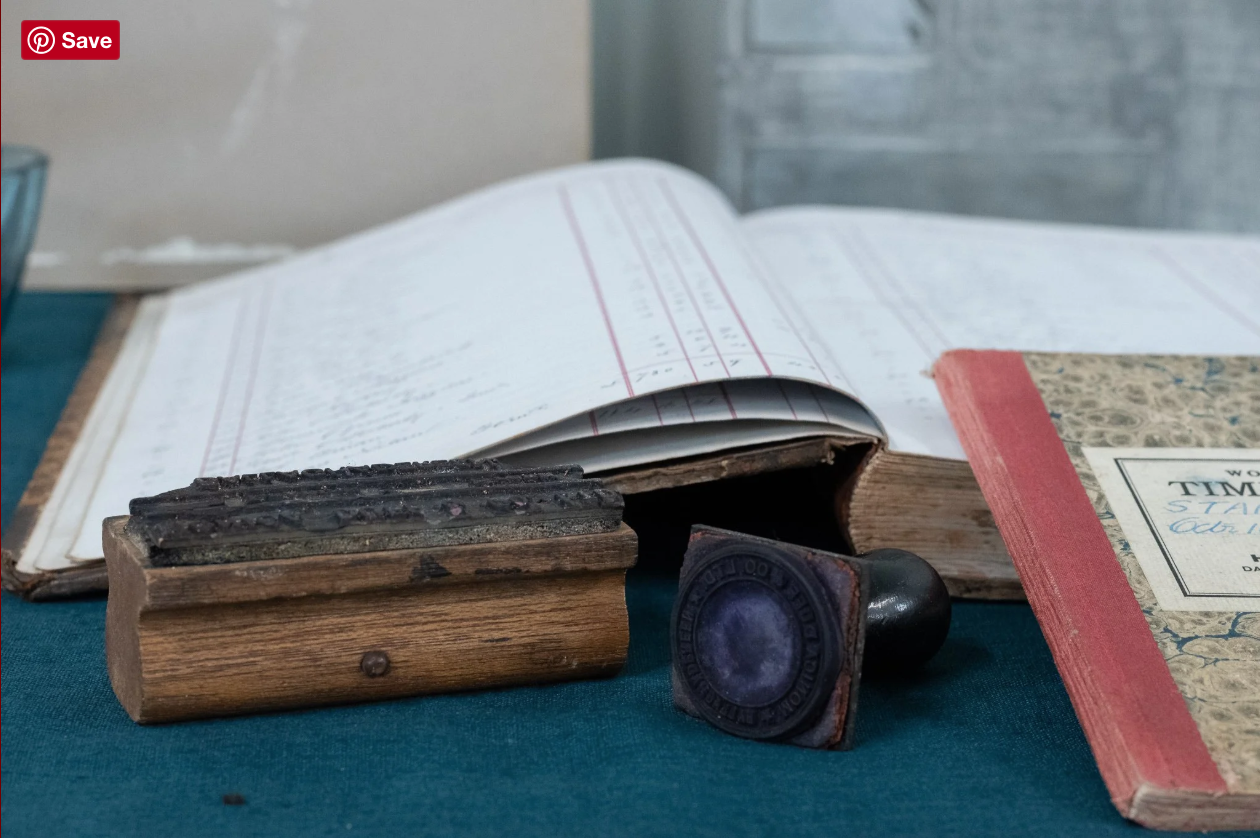
Original Journals from Monica Duff & Co. Courtesy of Michael Cawley Collection.
Meticulous record-keeping, a legacy of Anne Deane.
The Kilmainham Treaty
The Kilmainham Treaty of 1882 marked a turning point in the Land War. At the time, Ireland was gripped by fierce agitation. Mass rallies, rent strikes, and widespread evictions had brought the country to boiling point.
It was against this backdrop that negotiations took place between Charles Stewart Parnell, the British Government, and intermediaries, while Parnell was imprisoned in Kilmainham Gaol. The agreement secured government concessions on rent arrears and promised reforms that would ease conditions for thousands of tenant farmers. For many, it was celebrated as a peaceful end to the struggle.
The treaty was a political triumph that elevated Parnell to the status of national hero and demonstrated the power of peaceful diplomacy.
Yet many radicals viewed it as a retreat from the Land League’s broader aims, fearing it would stall momentum towards Home Rule and, ultimately, Irish independence.
Work in Progress: Dillon House, by Brooke Coleman
Soon afterwards, the Ladies’ Land League was disbanded, and its members were expected to retreat to more traditional, domestic roles. For Anna Parnell, the loss was devastating; she had dreamed of a political life, but was denied the opportunity simply because she was a woman.
She died in poverty in England, her story largely forgotten for decades.
The vital role these women played in sustaining the Land War went largely unrecognised until 1986, when historian Dr. Dana Hearne published Anna Parnell’s own account of the movement, ‘The Tale of the Great Sham’, bringing their voices and achievements back into the light.
The Cherry Blossom Tales Exhibition.
Anne Deane, however, was a successful entrepreneur who had already broken with the norms of her time by running and expanding one of Ireland’s largest businesses.
She remained known locally as a woman “ready to face greater risks for Ireland”, even at the expense of her own enterprise. (Footnote 5).
‘The Cherry Blossom Tales’ project seeks to honour this legacy, not only by remembering Anne Deane and the extraordinary women of the Ladies’ Land League, but by showing how creative arts can bring history and memory vividly to life.
The above audio is only a small snippet of the full conversation. To access the full audio, click HERE.
Reflections:
Detail, by Leo Horan.
Anne Deane lived during a time when women were largely ignored in political life, yet she emerged as one of the leaders of the most organised and radical women’s movements this country has ever seen.
Through the arts, St. Nathy’s students not only explored this period of Irish history; they felt it, imagined it, and brought it to life.
Stories, such as Anne Dean’s, are not just echoes of the past; they speak directly to the present, as they remind us of resilience, of the courage to lead when leadership is denied, and of the quiet but profound ways in which women have shaped Irish history.”
The Ballagh exhibition showcased a wide range of student work, including bold oil paintings, expressive acrylics, photography, and reflective writing.
The Cherry Blossom Tales, by Brooke Coleman.
The Cherry Blossom Tales, by Leo Horan.
The Cherry Blossom Tales, by Maya Villarojo Omaui.
A short process film, also shown at the event, featured a performance of a fictional conversation between Anne Deane and Michael Davitt, imagined beneath the blossoms of the last cherry tree.
Filmed and edited by the students, this video captures creative ways to engage with history. It is an example of using embodied methodologies in educational contexts.
Musicians for the Video: Megan Walsh, Aisling Maloney, Luke Halvey
‘The Cherry Blossom Tales’ marked the first public exhibition for many of the students, and the response was overwhelming. Audience members were deeply moved by the calibre of the work and the emotional resonance of the theme.
A Series of Photographs, by Anna King: Student’s Work in Progress.

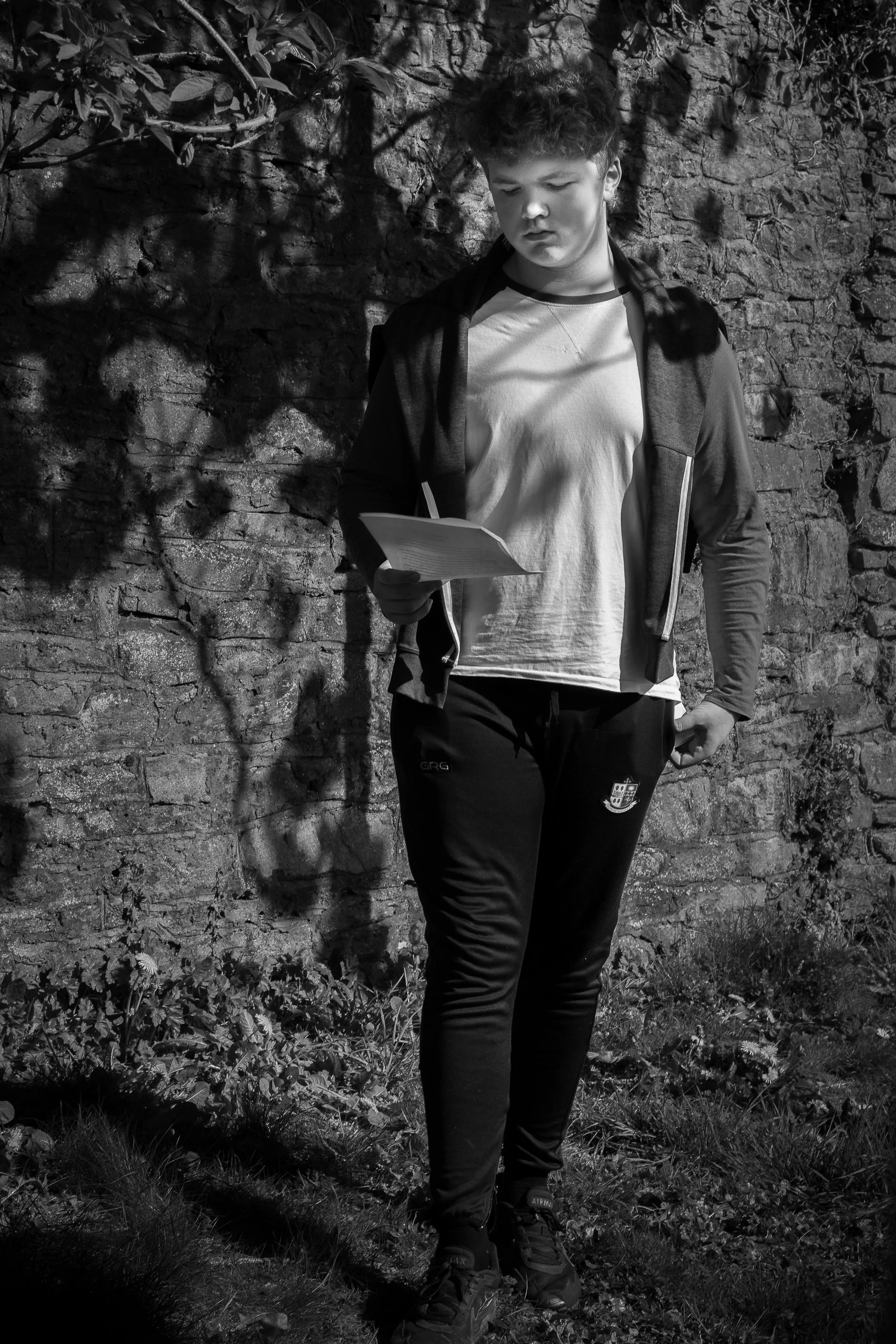


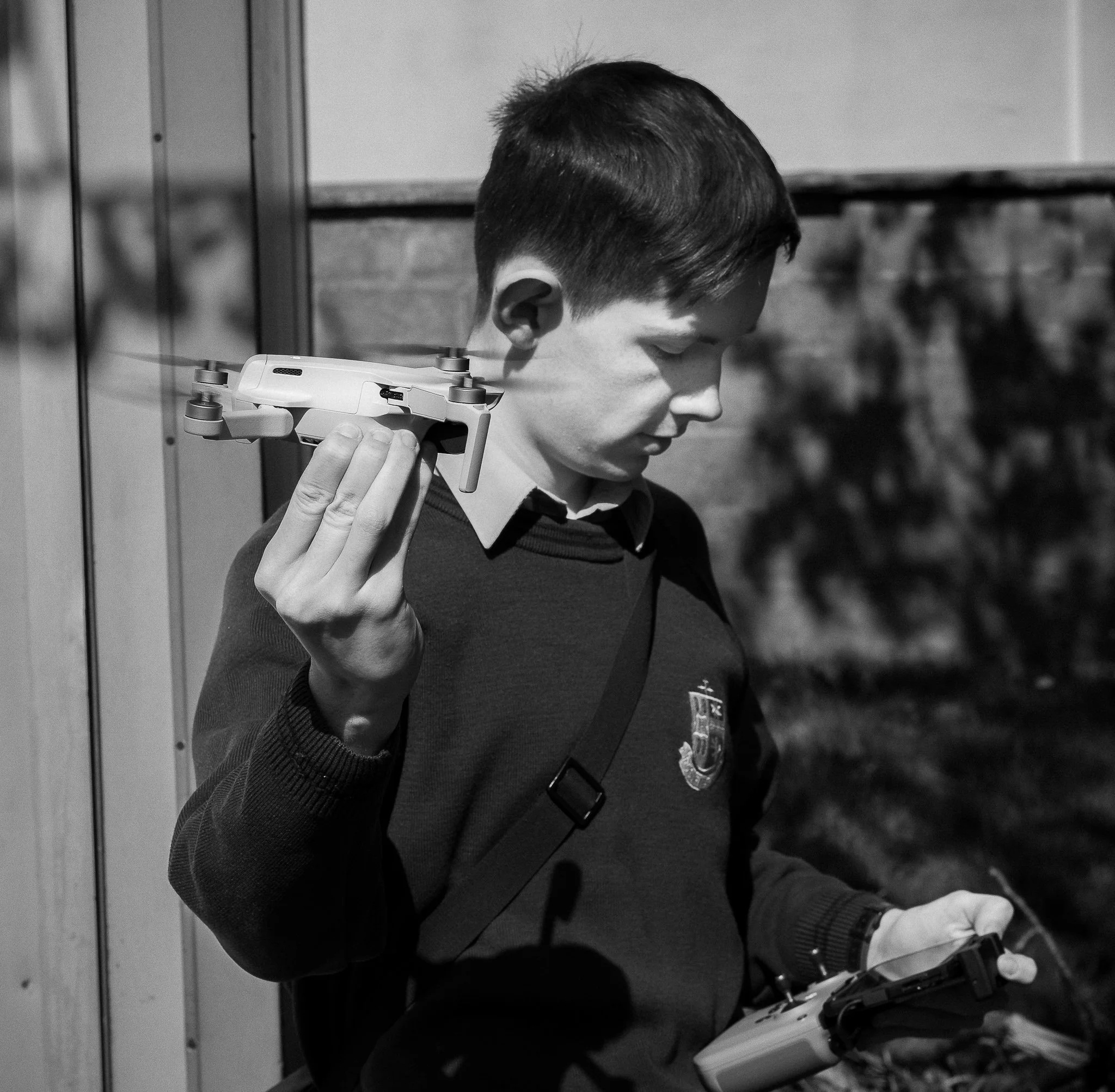


The Letter Beneath the Cherry Tree
Workshops:



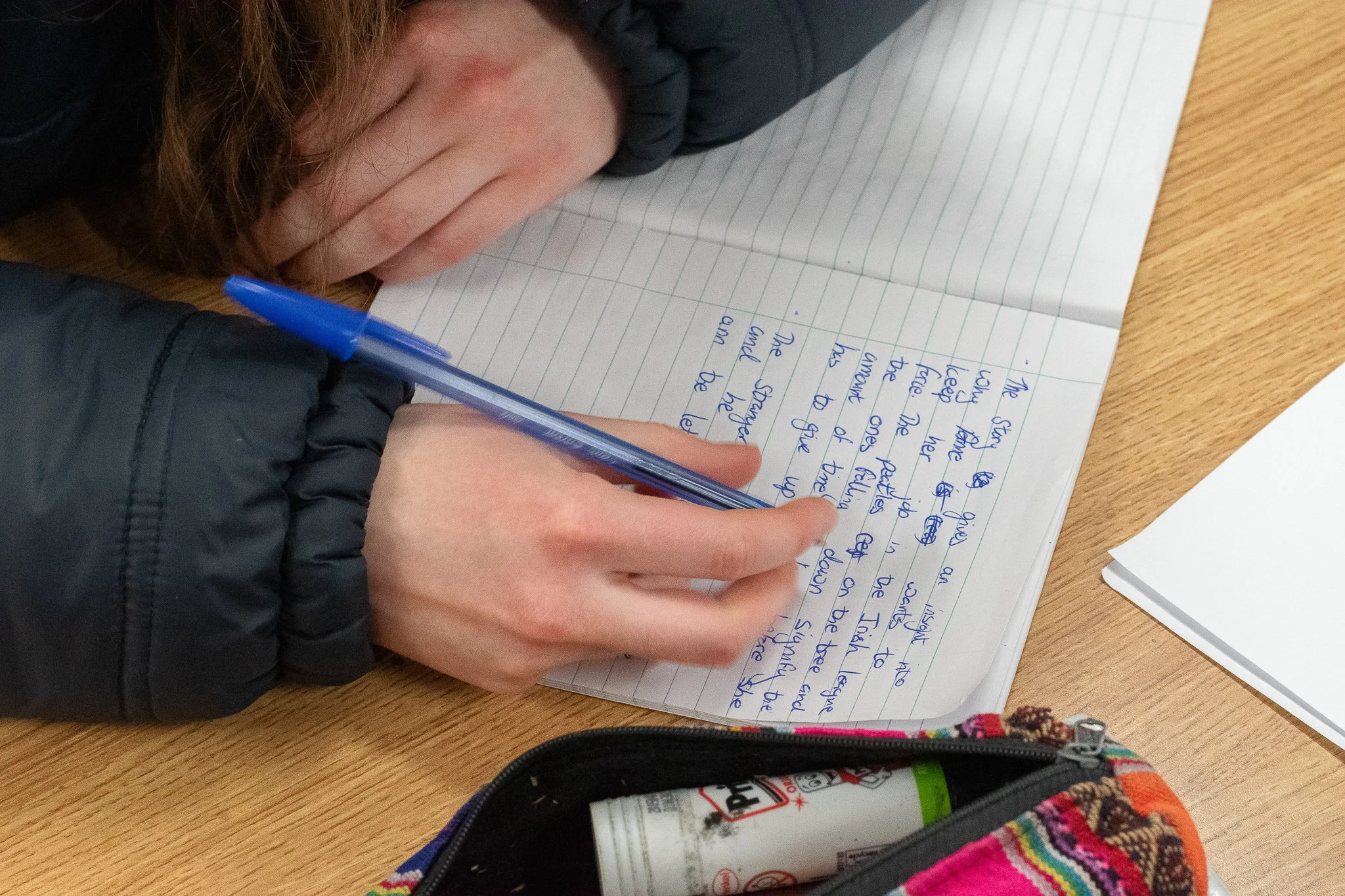
A special thank you to St. Nathy’s College, especially Karen Munnelly & Conor O’Connell. I worked closely with Karen’s 5th year and TY students, and Conor facilitated two of his art students to respond to the Cherry Blossom Tales.
Karen Munnelly (Teacher at St. Nathy’s College), Aaron Fox (Student), Rhona McGrath (Roscommon Arts Officer), Henry Black (Student), & Father Martin Henry (Principal, St. Nathy’s College).
In the coming weeks, selected student work and behind-the-scenes insights will be shared online, allowing the conversation to continue. Keep an eye on Anna’s instagram to see how the project develops @contemplative_art_
Student Contributors
Painters: Brooke Coleman, Meeko Yu, Sonya Radchenko, Maya Villarojo Omaui, Leo Horan.
Woodwork: Kieran Henderson
Video Performers: Brooke Coleman, Jack Cummins, Oisín Llewellyn.
Video Filming & Editing: Aaron Fox, Henry Black, Oisin Llewellyn and Jack Cummins.
Musicians: Megan Walsh, Aisling Maloney, Luke Halvey
Thank you:
Creative Ireland (Áine Butler), Roscommon County Council (Rhona McGrath & Mary Smyth), St. Nathy's College (Karen Munnelly, Father Martin Henry, Conor O’Connell), Margaret Garvey, Ballaghaderreen Arts Festival, Michael Davitt Museum, National Library of Ireland, Durkin’s Ballaghaderreen, and Creative Places Ballaghaderreen.
Footnotes
According to an entry in Wilfrid Scawen Blunt’s diary dated April 8th, 1886, Anne Deane “spoke a good deal of Parnell, who had been once or twice to her house”. Ref: “Dillon House,” Beara Breifne Way. www.bearabreifneway.ie (accessed August 2025).
Source: Jane Cote. Writing Women out of History. Land League In Carbally.
Claremorris meeting: The Ladies’ Land League were welcomed by the Very Rev. Canon Ulick J. Bourke PP. The editor, James Daly, was not impressed. He wrote: “We do not see how any man or body of men having Celtic blood coursing in their veins can be found to descend to or condescend to female leadership in Irish constitutional warfare.” Recorded in The Connaught Telegraph, February 1881.
Source: Nancy Smyth, “Letters to the Editor,” Irish Independent, 17 February 2019..
Michale Davitt Quote:
‘Unmanageable Revolutionaries Women and Irish Nationalism’, by Margaret Ward. Source: Land League In Carbally
Quote:
Nee–Hip North East England Historians of Ireland. Post Graduate Network.

